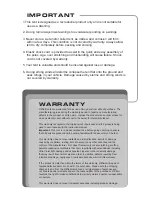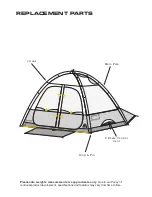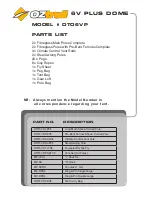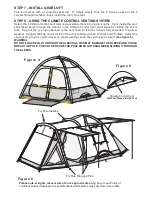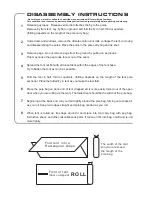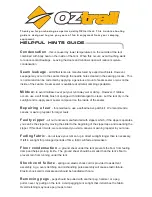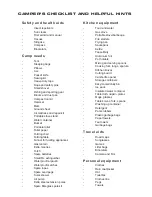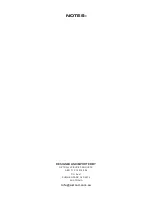
IMPORTANT SAFETY AND
CARE INFORMATION
SAFETY HINTS
To prevent injury caused by fire -
Do not pitch the tent near a camp fire or any other flame source.
Do not use candles, matches or any other flame source in or near tent.
(This includes stoves, cooking equipment, lighting and heating appliances)
Only use recommended water repellent compounds on the tent fly.
Do not spray tent fabric with insecticide.
To prevent injury caused by gas poisoning or suffocation –
Do not use fuel burning/oxygen consuming devices inside the tent. This includes candles, gas lanterns,
kerosene lamps, stoves, cooking appliances and heating appliances..
Do not use gas appliances of any kind inside the tent.
EXTREME CAUTION: Gas or fumes or lack of oxygen within the tent could result in unconsciousness
and brain damage and eventually death.
To prevent injury caused by your camping environment –
Do not pitch your tent under trees with dead branches or under trees known to drop branches.
Do not pitch your tent on an area that could get flooded.
Do not pitch your tent near cliffs in case of collapse or rock fall.
Do not leave tent erected in strong winds – collapse tent onto ground and seek refuge in your vehicle.
To prevent injury caused by electricity -
Always exercise care when using electricity and electric lighting in and near tents. Disconnect or turn off
during rain.
Keep all flame and heat sources away from the tent fabric.
This tent complies with the flammability requirements of CPAI-84. However, the
fabric may burn if left in continuous contact with a flame from any source. Also,
the application of any foreign substance to the tent fabric may render the flame
resistant properties ineffective.
UNDERSTANDING WATERPROOFNESS – WHAT IS NOT COVERED BY
WARRANTY!
OZtrail tents use waterproof and water repellent fabrics. However, with the addition of seams, zips
and other desirable features a recreational tent will not be as waterproof as a car, house or other solid
structures. The following are common examples of how water can enter a tent: -
Condensation
– When warm moist air meets cooler air, clouds (condensation) occurs. A tent fly is an
impermeable layer between the warm moist air inside the tent and the cooler air outside the tent. The
warm moist air condenses on the inside surface of the fly. Condensation can be reduced if the tent is well
ventilated.
Seams
– All seams are factory tape sealed but could leak at webbing and guy line entry points and
where there are multiple layers of fabric. If leakage at these points becomes a problem, simply use a
recommended seam sealant.
Zips
– All care is taken in the design to cover zips with rain flaps. At times wind driven rain could force
water through the zips. To minimise this, make sure all doors are closed correctly and that the flaps cover
the zips.
Floor
– If the ground is very wet or water pools under the floor, the downward pressure of standing,
kneeling or lying on the floor could force water through the floor fabric. To prevent this, do not pitch the
tent over hollows and make sure water drains away from the tent. You could also use a ground sheet
under the tent.
Structural integrity
– A perfectly pitched tent on perfectly flat, dry ground is structurally strong and most
waterproof. During prolonged wind and rain it may be necessary to tighten guy lines and reset the tent
pegs to prevent the fly from sagging or flapping and attend to drainage around the perimeter of the tent.
Sagging and incorrect pitching weakens the tent structure and could allow water to pool on the fly placing
undue forces on the tent causing leaking and breakages.



